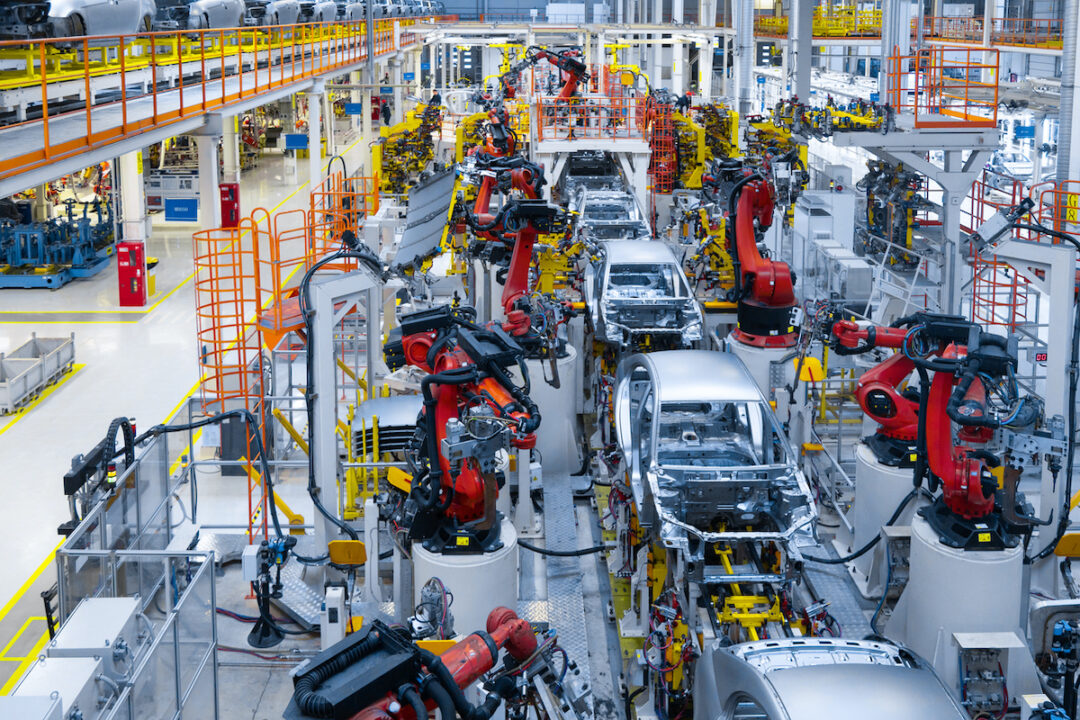
The biggest challenge facing global supply chains is instability. Recent disruptions have led to delays in the delivery of critical components — in particular, microchips —and price peaks due to high demand and low supply. The automotive supply chain is a primary example of an industry severely impacted by these issues.
Automotive supply chains are made up of multiple tiers of suppliers, manufacturers, distributors and service providers, spread around the world. A typical motor vehicle can contain anything between 15,000 and 25,000 component parts. That’s a lot of material to bring together and provide integrity for the final product.
Unfortunately, stability concerns will persist this year in all areas of the automotive industry, including:
- Inflation. Suppliers identify material price increases and labor costs as their top concerns and primary drivers for reduced earnings.
- Labor. Due to high turnover and fluctuating releases, suppliers are approximately one-third less efficient than before COVID-19.
- Volumes. Supply chain instability continues to create choppy waves of demand from original equipment manufacturers, adding costs and stress to the supply base. Additionally, the ramp-up of multiple electric vehicle platforms is overburdening the limited talent pool of those capable of increasing supplier capacity.
High Labor Turnover
Talent shortages continue to plague the manufacturing sector, extending beyond workers to include a lack of leadership. This is largely due to inadequate employee training and development inside factories.
Recent Gallup polls found that employee engagement dropped 36% in 2020, 34% in 2021, 32% in 2022, and continues to decline. The survey measures various elements of the workplace, including employees' level of agreement about clarity of expectations, opportunities for development and their opinions at work.
Additionally, a new survey commissioned by ABB Robotics and produced in association with Automotive Manufacturing Solutions found that 58% of respondents cited training, upskilling and education as key to addressing the challenges of a changing workforce.
Although inflation is likely to push people back into the workforce, workers still have choices with higher wages and better work environments. Ultimately, the culture of the organization will have the most significant impact on engagement.
When company leaders begin to notice high employee turnover, they need to analyze the root of the problem. Having regular meetings with employees is essential to hearing their opinions and seeing how they handle the workload. Based on this feedback, the leadership team may choose to reassess the duties and demands of certain positions, or make internal changes that help improve employee satisfaction and productivity.
Additionally, it’s important that companies and industries start to push for employee training and development if they want a skilled workforce. When companies offer ongoing training programs, it shows that leaders value internal skills and talents, as well as the advancement and development of the workforce.
The Impact of EVs
Another big challenge in the automotive industry is the transition to EVs. It’s expected that by 2030, approximately 35% of North American production will be electric vehicles.
The shift toward EVs has increased demand for certain components, such as batteries and semiconductors, which are in short supply. This rapid transition will be challenged by the rising cost of raw materials, availability, and a lack of readiness in the automotive supply base and supporting industries.
EVs and hybrids are often equipped with more advanced features, technologies requiring systems-on-chip designs and highly developed process nodes. They also need semiconductors for their power and electronic control systems than gasoline-powered vehicles.
To mitigate these risks and ensure the smoothest transition possible, companies must increasingly focus on diversifying their supply chains, investing in their people and adopting technologies such as artificial intelligence, data analytics and automation.
Bringing Manufacturing Back
American manufacturers are increasingly bringing production back to the U.S. to reduce their reliance on global supply chains that have proven vulnerable to disruption by developments such as the pandemic and geopolitical tensions.
A large number of American companies with operations in China have already moved some production back to the U.S. or plan to do so in the next three years, according to Kearney's 2021 Reshoring Index. General Motors announced an investment in domestic battery cell production that will help it to achieve the goal of becoming North America's biggest EV producer.
In addition, government incentives are helping to motivate companies to re-locate manufacturing to the U.S. For example, Advanced Manufacturing Tax Credit (45X MPTC) applies to components for wind, solar and battery projects made in the U.S., and \the credits are tradable, meaning they can be transferred to an unrelated party.
According to Atlas Public Policy’s EV Hub, at the end of 2020, the U.S. had $51 billion in announced domestic EV and battery factories, lagging the $115 billion announced for China at the time. But thanks in part to the new tax credit that number had jumped to $210 billion by January of 2023, putting the U.S. at the head of the pack globally for new battery factories.
Another factor in bringing manufacturing back to North America is the United States-Mexico-Canada Agreement (USMCA), which includes provisions designed to incentivize new U.S. investment in the automotive sector, encourage additional purchases of U.S.-produced auto parts, and support the future production of EVs within the country.
Given the transitions that the automotive industry is undergoing today, companies need to develop a clear strategy and be prepared with a workable plan when the next crisis appears. Having the necessary tools and strategies to support any operational situation is key to staying afloat in the market.
Thomas Kowal is president of Seraph.







